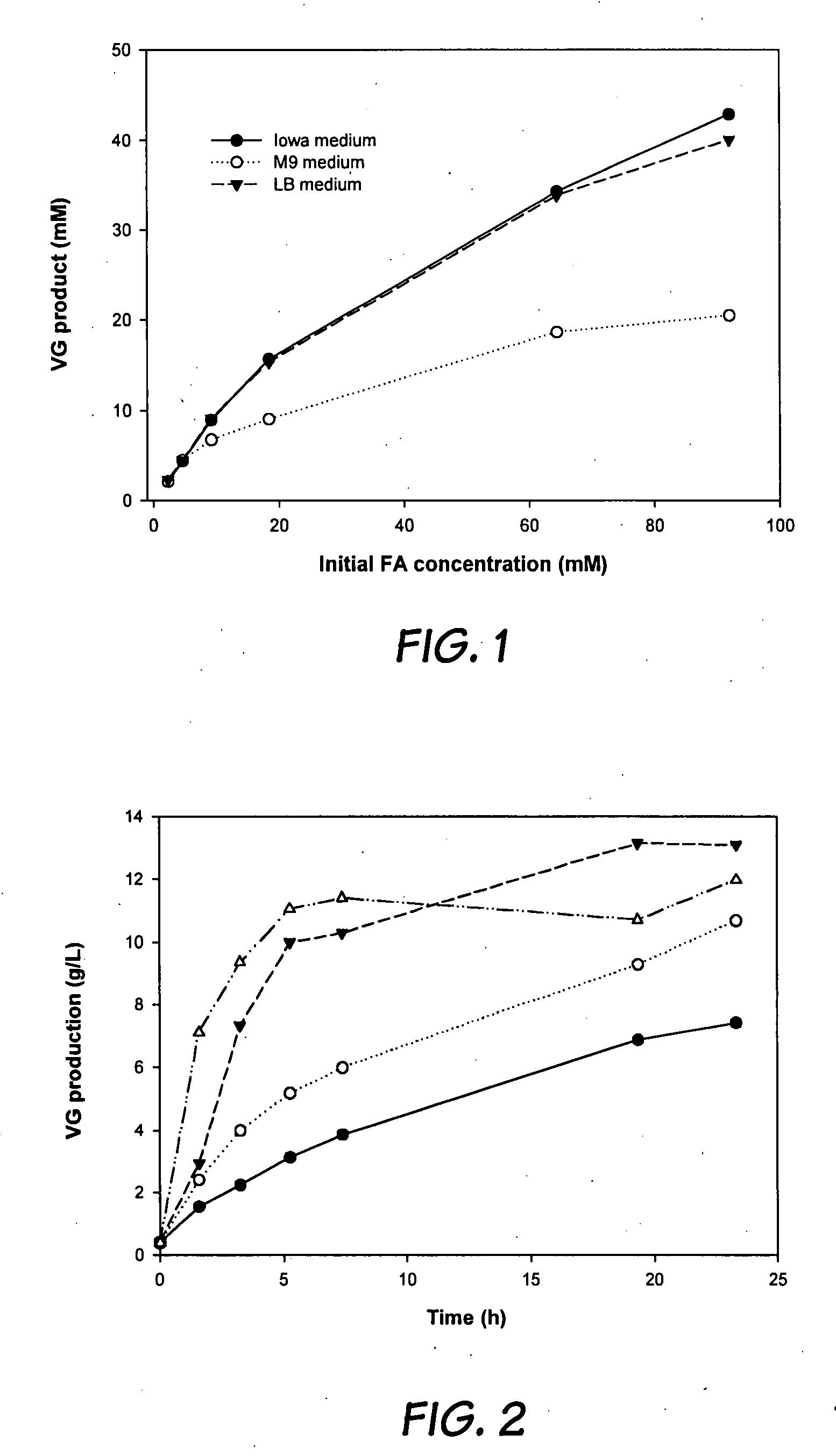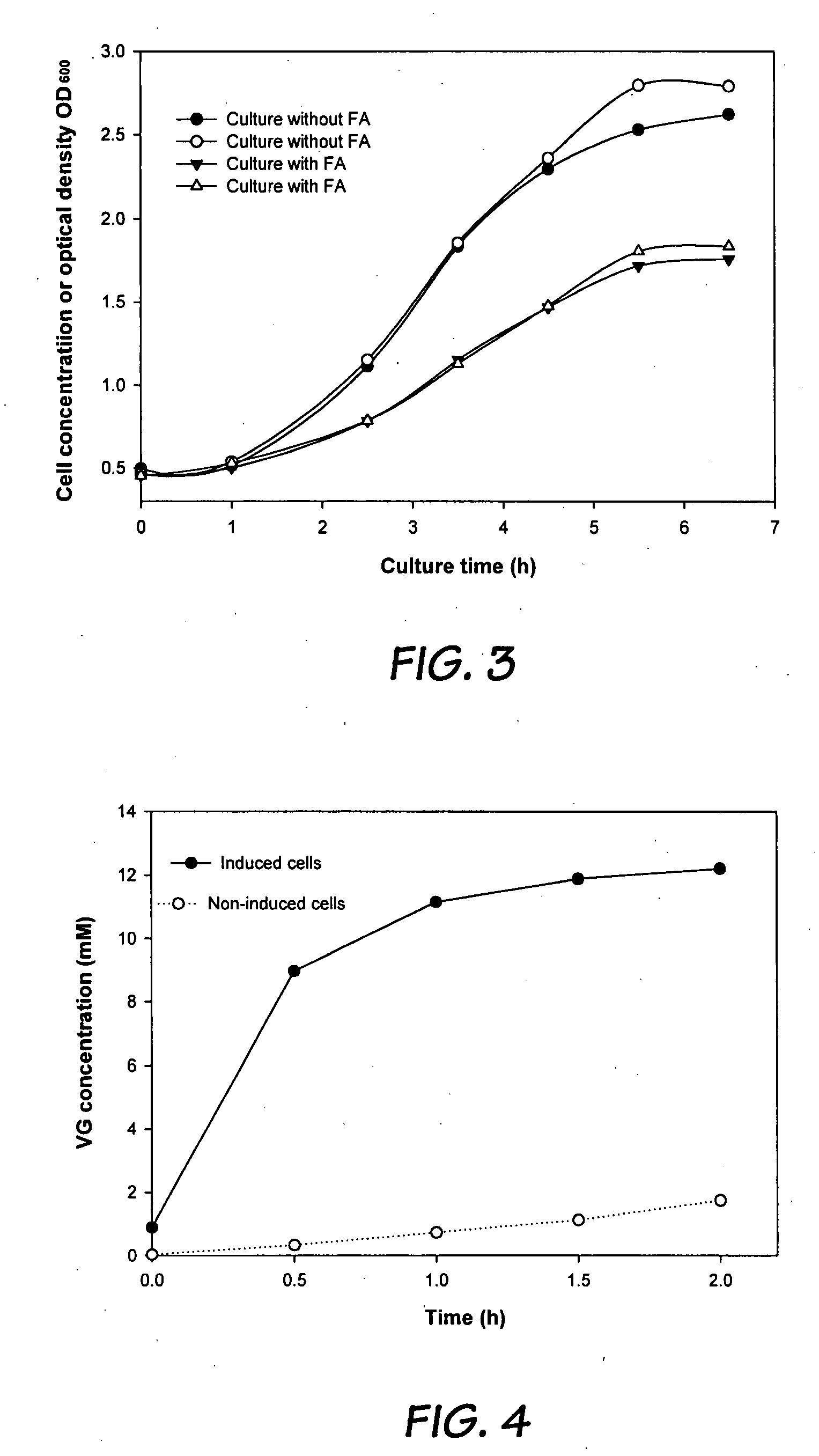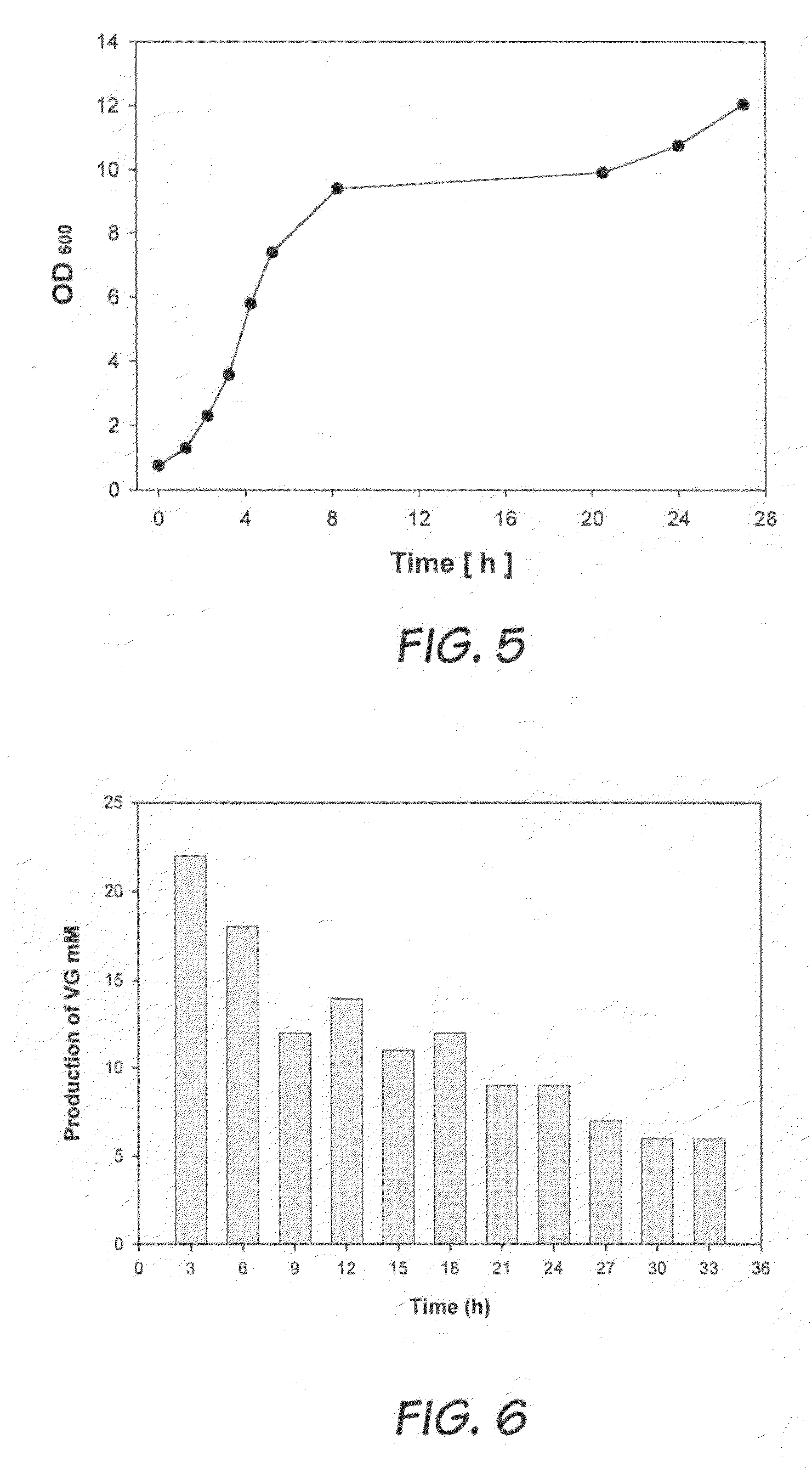Process for producing 4-vinylguaiacol by biodecaroxylation of ferulic acid
- Summary
- Abstract
- Description
- Claims
- Application Information
AI Technical Summary
Benefits of technology
Problems solved by technology
Method used
Image
Examples
example 1
Biotransformation of Ferulic Acid using Wild Type B. pumilus as a Biocatalyst in a Mono-Aqueous Phase at Different Initial FA Concentrations
[0046]A pre-culture was prepared by inoculating colonies of Bacillus pumilus from agars in a Petri dish into a small flask containing 25 ml of the above described medium. Then 10 ml of the pre-culture was transferred into 100 ml of medium in a 500-mL Erlenmeyer flask containing Iowa medium (0.5 g / L ferulic acid, 20 g / L glucose, 5 g / L yeast extract, 5 g / L NaCl, 5 g / L tryptic soy broth, 5 g / L K2 HPO4.), or minimum medium or LB medium.
[0047]Standard culture conditions were as follows; temperature 30° C. and agitation rate 250 rpm. The pH was maintained at 6.8 by the addition of NaOH solution (1 M). Cell growth was observed by measuring cell concentration (optical density OD600). Cells were harvested after 24 h of incubation by centrifugation (10000×g for 10 min). The resulting cell pellets were washed with 0.1 M phosphate buffer pH 6.8, then stored...
example 2
Biotransformation of FA using Wild Type B. pumilus in an Organic Aqueous Two-Phase System
[0049]For whole cell biotransformations in a two-phase system, eight different solvents were selected for comparison purpose. The cells were resuspended in 1 ml of 0.1 M phosphate buffer to a concentration (OD600=5) and mixed with an equal volume of organic solvent in flasks. Biotransformation was started at an initial FA concentration of 36 mM. The experiments were performed under the same conditions as in the mono-phase biotransformation process (Example 1). After stopping the reactions, reaction mixture (2 ml) was extracted with 18 ml of methanol. Considering the low solubility of dodecane and hexadecane in methanol, the organic phase was separated and analyzed using FTIR.
[0050]As illustrated in Table 1, two-phase bioconversion using non-polar hydrocarbons led to faster biotransformation (nearly 3 times higher activity than using water alone) and easier product recovery. Some polar solvents (...
example 3
Temperature Effect on the Bioconversion using Wild Type B. pumilus
[0051]The effect of temperature on the reaction kinetics was determined under the same conditions. The initial reaction volume was 10 ml (5 ml cell suspension+5 ml octane). Samples were taken from the aqueous phase and the organic phase separately to follow the production rate and enzyme stability for 24 h.
[0052]The solubility of ferulic acid in the aqueous phase is significantly influenced by temperature. The reaction kinetics also depends on the temperature. Therefore, the productivity of VG is a function of temperature. Biotransformations were performed at four temperatures (7-37° C.) in an aqueous-octane (1:1) two-phase system and the results are shown in FIG. 2. In FIG. 2, 7° C. 15° C.; 25° C.; 37° C. Initial FA and cell concentrations in the aqueous phase were 25 g / l and 2.15 g DCW / L (dry cell weight per liter), respectively. According to the results, a higher reaction rate was observed at higher temperatures....
PUM
| Property | Measurement | Unit |
|---|---|---|
| Temperature | aaaaa | aaaaa |
| Temperature | aaaaa | aaaaa |
| Time | aaaaa | aaaaa |
Abstract
Description
Claims
Application Information
 Login to View More
Login to View More - R&D
- Intellectual Property
- Life Sciences
- Materials
- Tech Scout
- Unparalleled Data Quality
- Higher Quality Content
- 60% Fewer Hallucinations
Browse by: Latest US Patents, China's latest patents, Technical Efficacy Thesaurus, Application Domain, Technology Topic, Popular Technical Reports.
© 2025 PatSnap. All rights reserved.Legal|Privacy policy|Modern Slavery Act Transparency Statement|Sitemap|About US| Contact US: help@patsnap.com



